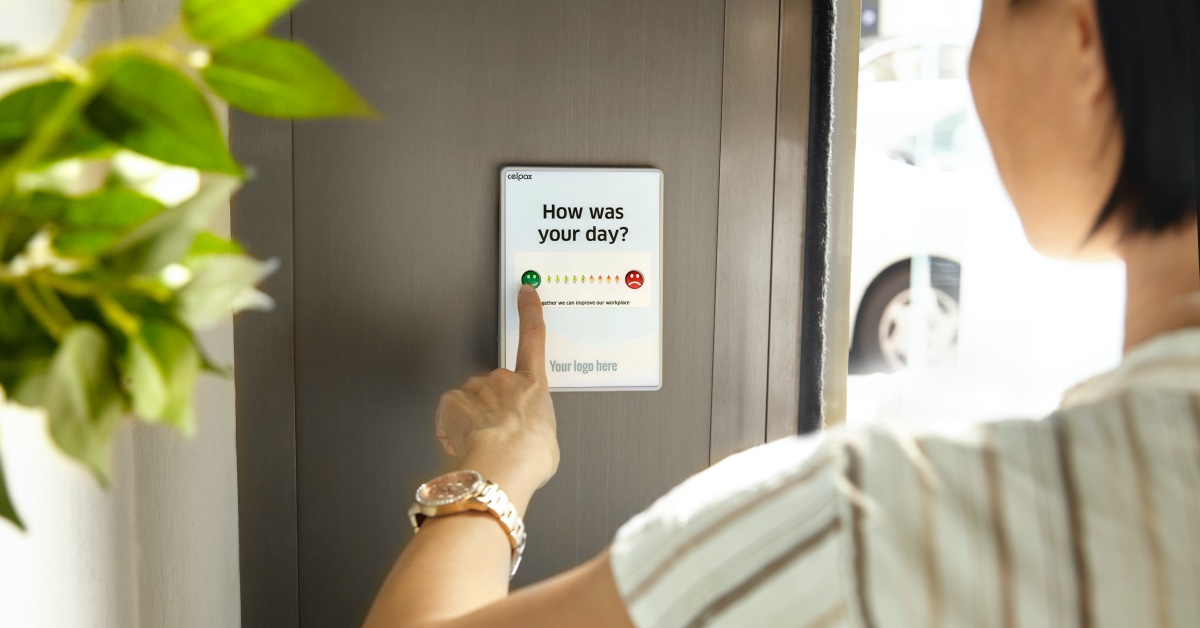
Measuring Employee Engagement and Satisfaction in 2023
The landscape of employee engagement and the way organizations measure it is evolving quickly. Many managers have been forced to explore new avenues for not only driving employee connection but also monitoring team engagement levels. This is due to the massive shift in recent years over to a more distributed work model where employees may be separated geographically or by multiple time zones. That separation creates new challenges to understanding and maintaining engagement.
Measuring the engagement levels of employees is important because they can impact productivity. According to Gallup, highly engaged employees are 21% more productive than those that are disengaged. These changes in productivity cascade and then impact key business metrics such as profitability and employee turn-over rates.

We expect this trend to continue throughout 2023 and beyond as organizations acclimate to a new normal relating to hybrid work schedules and integrating virtual collaboration into their workflow. So, it's important to understand all the tools at your disposal for measuring the current levels of employee engagement in your company and strategies for driving those engagement metrics up.
Let's start by exploring new and old approaches to measuring employee engagement and satisfaction.
Traditional Approaches to Measuring Engagement

Measuring employee satisfaction is something businesses have been doing for a long time. While these traditional strategies have been a mainstay of organizations for many years, that's for a good reason! They get results. Let's dive in.
Employee Satisfaction Surveys
Attempting to index employee engagement is nothing new to business. Back in the 1920's, industrial companies developed the first employee surveys known as "employee-attitude surveys." They were used by management to get a holistic picture of how their employees were feeling about a variety of topics including working conditions, motivation, and the impact of management.
Staff satisfaction surveys are still commonly used today in organizations wishing to understand engagement levels. Often, companies develop and distribute their own internal surveys but there are also professional survey providers that can help in the process. With these results in hand, management then analyzes the metrics across time to identify correlations between organizational factors and employee activity.
If your organization is developing their own survey questions, it's important to make sure you're following all the best practices. Here are some tips to keep in mind:
- Ensure every question is clear and understandable to the employees answering.
- Avoid the use of technical jargon that could be misunderstood or confusing.
- If you're making use of multiple choice questions, be sure that no plausible choices are missing and that options are succinct and to the point.
One-on-one interviews
Another tool in a manager’s toolbox is the one-on-one interview where employees sit down with their manager or other interviewer and dig into relevant questions. While more time intensive than a standardized satisfaction survey, connecting with employees directly often leads to deeper conversation and a more mutual understanding of the situation at hand.
When sitting face-to-face with someone it's much easier to listen because you have access to all their different forms of communication from posture to vocal tone. And this format also allows employees to clarify the what's and why's behind all their answers. That's great for leaders that work best with qualitative data alongside quantitative metrics for decision-making.
Here are a few tips for running successful one-on-one employee satisfaction interviews:
- These interviews work best when performed on a regular basis. Consider setting aside 30-60 minutes each quarter for interviews with each of your employees.
- Keep your conversation as informal as possible while also keeping to your questions. It's important that employees feel safe while they provide their feedback.
- Track the results of each meeting to ensure you're staying accountable, then review the high-level results with the team regularly.
Focus Groups
Focus groups got started in the 1940s to perform market research for radio soap operas. The aim was for researchers to understand participants reactions and then draw correlations between those reactions and that of the overall demographic set. The idea is to get a group of folks together in a room, present them with questions and products, then gather their feedback.
In the context of employee satisfactions, focus groups can be a valuable tool for executives looking to efficiently gain perspective from their staff. It's great for gathering quantitative data on various workplace issues and getting an up-close look at employee opinions and ideas. Typical focus groups are comprised of 6 to 10 people to allow for fluid conversation.
But it's important to follow some basic rules to ensure employees engage:
- Try to keep the discussion moving at a good pace and avoid getting caught in any conversational eddies that throw the group off.
- It's very important in any group discussion to ensure everyone stays focused on the topic at hand. This can easily get disrupted by side-conversations so make sure to step in and guide the group.
- Make sure you're fully understanding and get closure on each and every question. It's easy to drift into another relevant topic based on group answers but it's important to make sure everyone gets a chance to share.
Modern Approaches to Measuring Engagement

With more employees working in a distributed fashion, often away from the main office, our strategies for getting employee feedback have evolved. Now, with in-office attendance rates at a much lower level than pre-pandemic, teams need to be more creative around measuring employee engagement.
Data Analytics and AI
Data analytics and AI are relatively recent industry developments, but they can really pack a punch when it comes to understanding workforce sentiment. Analytics in general is the concept of taking raw data, whether it be sales orders or emails sent, and then using tools to understand those large sets of data and identify trends or patters. In this case, we're looking for hints around employee engagement and satisfaction levels.
AI, an even more recent development, adds the ability to predict potential issues and then go further and even suggest solutions. Then executives can take those actionable insights and start using them to improve everyone's workplace experience.
To make the most use of these tools and approach we recommend you establish a regular feedback loop where you collect data and use AI to analyze it to continuously monitor changes in satisfaction levels. Then adjust your strategies based on the ongoing analysis.
Pulse Surveys
A pulse survey is a short, focused, and frequent (often online) survey. In this case, organizations use them to track satisfaction levels in real-time or on a regular basis. Since these surveys are conducted more frequently (monthly, quarterly, or even weekly) they are better at capturing immediate feedback to help organizations stay agile.
This is a great option for organizations that have adopted a continuous improvement mindset because of the real-time nature of these pulse surveys. Employees can see that their feedback leads directly back to concrete organizational improvements. Seeing that happen helps to show everyone that leadership is taking their opinion seriously.
Some tips for using pulse surveys:
- Decide early on what the survey objectives will be. Is it to assess overall satisfaction or identify areas for improvement?
- Select a frequency and then stick with it for a predetermined amount of time. This gives the initiative time to show results.
- Like traditional surveys, it's very important to create concise and relevant questions that align with your objectives.
Badge Reader Data
Some companies are experimenting with the data they receive when employees swipe their badge to go through the front door at an office or move between rooms within the office. This data can help leadership and workplace experience professionals identify typical access patterns along with frequency of use. It's great tool to measure workspace utilization and how employees engage together in physical space.
While this data does not expose employee engagement that occurs remotely - it certainly sheds light on the amount of time spent in the office and the way employees move and collaborate with one another. When integrated with pulse or traditional surveys, they have an ability to enhance the accuracy and relevance of the data collected through correlations space and feedback.
Wrapping Up
You can see that there are a myriad of different ways, traditional and modern, that organizations are using today to keep up with employee engagement and satisfaction levels. We can see that in this new hybrid era of work, the workplace is no longer confined to just one single physical location but distributed geographically so it's important to adapt our measurement strategies.
If your team is looking for ways to drive connection in your virtual interactions, I invite you to learn more about our virtual collaboration platform JumpRoom and how it can improve engagement and satisfaction levels in hybrid workplaces.






